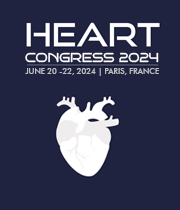Title : Impact of left atrial posterior wall ablation during pulsed field ablation for persistent atrial fibrillation
Abstract:
Review - Impact of Left Atrial Posterior Wall Ablation During Pulsed Field Ablation for Persistent Atrial Fibrillation Left atrial posterior wall ablation has emerged as a new form of technology for persistent atrial fibrillation, and studies suggest that this method may indicate positive results and improved outcomes among patients with persistent atrial fibrillation. Furthermore, some studies may suggest that left atrial posterior wall ablation may improve pulmonary vein isolation and rhythm control in patients. In addition, studies indicate that the addition of LAPWA to PVI may improve procedural effectiveness in comparison to PVI alone. However, taking into account several studies, the findings are not consistent in all the studies on the impact of left atrial posterior wall ablation during pulsed field ablation for persistent atrial fibrillation. While some research did find favorable patient outcomes, other studies presented conflicting evidence. For instance, one study showed that patients with persistent atrial fibrillation did not get a statistically better outcome from posterior wall ablation. There are safety concerns for the left atrial posterior wall ablation for persistent atrial fibrillation among patients. While the majority of studies did indicate that left atrial posterior wall ablation is safe and practicable, they also did not pose any risks to the patient's safety. According to one study, the procedure may cause problems, including atrioesophageal fistulas. Further research on the effect of left atrial posterior wall ablation during pulsed field ablation for persistent atrial fibrillation is required despite this conflicting evidence and understanding of the procedure. Therefore, larger sample sizes and prospective, multicenter trials are necessary to clarify the actual effect of LAPWA during PFA for persistent AF. To successfully influence clinical practice, these studies should thoroughly analyze both safety and efficacy outcomes. To conclude, some studies suggest the positive impact and benefit of the effect of left atrial posterior wall ablation during pulsed field ablation for persistent atrial fibrillation, other studies suggest mixed results and findings. Furthermore, safety concerns and a lack of agreement emphasize the need for thorough research to ascertain the actual effects of left atrial posterior wall ablation in this context.
Audience Take Away:
Understanding the effect of left atrial posterior wall ablation during pulsed field ablation for persistent atrial fibrillation will prove vital for physicians. To assist medical practitioners in making well-informed decisions, it is crucial that further research be done to understand how LAPWA functions in PFA for chronic AF. Clinical decision-making and future research endeavors can both benefit from this recognition. The data provided can be used by researchers and clinicians to assess LAPWA's role in the treatment of persistent AF meticulously. This knowledge could result in better patient outcomes and more informed treatment decisions. Furthermore, the presentation can be used as instructional material to inform students and health care providers about new developments in the field of cardiology.The presentation will focus on the safety aspects of LAPWA, including potential dangers covering atrioesophageal fistulas. The audience will be better able to assess the risk-benefit characteristics of LAPWA in healthcare settings with this understanding.



